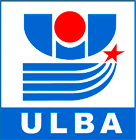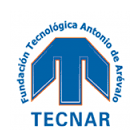LITEX creates fully decentralized cryptocurrency payment ecosystem
LITEX creates fully decentralized cryptocurrency payment ecosystem
LOS ANGELES, April 17, 2018 /PRNewswire/ -- In a scenario which has a cryptocurrency at both ends of the transaction, the large lightning network structure supported by multiple connections established by LITEX is a payment method with the highest efficiency and the lowest cost. LITEX's first-mover advantage places the network in a position whereby it can generate the highest level of user loyalty, making LITEX a first choice for payment by individuals or entities preferring to settle a transaction using a cryptocurrency.
LITEX founder Wang Shuobin said: "Figuratively, each public chain wants to build islands with different characteristics, some of which are secured and enclosed, such as Bitcoin, while some focus on building out more facilities, such as Ethereum, and some have a highly developed highway, such as EOS. The real world outside the chain is the continent. Taking the expansion solution that includes off-chain, the main technical direction of LITEX, as an example, each public chain is about constructing islands, while LITEX is about building interconnecting channels. These channels include channels within an island. Some of the existing public chains need on-chain settlement and off-chain expansion. Not all public chains will be on-chain supported by a high number of transactions per second (tps) as a high tps may give rise to a series of challenges, among them, consensus mechanism changes that make on-chain less secure. The second is an inter-island channel, such as for handling an atomic swap (the exchange of one cryptocurrency to another cryptocurrency, without the need to trust a third-party) in an off-chain solution. The third is the channel between the island and the continent, allowing digital assets to be consumed and used in the real world, and achieving the free flow of digital assets."
LITEX's vision is to create a fully decentralized cryptocurrency payment ecosystem. Based on the business model where payments do not depend on the possession of a bank card combined with the BOLT protocol, the LITEX team designed the LITEX Network or LTXN, creating the process whereby the currency exchanger pays the fiat money or legal tender on behalf of the customer and the customer reimburses the exchanger using a cryptocurrency. This process is guaranteed by smart contracts and does not require the participation of a centralized entity.
Two layers were established in the LTXN architecture: the decision-making network which matches the customer's payment request and exchanger's request in the upper layer, and the lower layer, where the lightning network establishes a secure and efficient payment path for transfer of the cryptocurrency. The merchant completes the settlement of the purchase of the currency on behalf of the customer through a bill-to party. In addition, the upper decision network also enhances network efficiency and restrains the centralization tendency of the lightning network by means of incentive feedback and other strategies.
The diagram above shows the overall architecture of the LITEX solution. The solid arrows represent the flow of real transaction elements such as money and products, while the arrows with a dotted line represent the flow of data and control information in the LITEX system. The R is also referred to as the original image, which can be considered as a code language. The individual or entity who receives the code can request cryptocurrency from their upstream. This is the mechanism used in the smart hash time-locked contract (HTLC) to ensure that the entire chain can be automatically traded and transmitted.
The LITEX ecosystem executes two processes: the main process in which the customer completes the purchase using a cryptocurrency, which runs in a counter-clockwise direction as described in the above diagram; and the sub-process in which the exchanger swaps the fiat money for cryptocurrency, which runs in a clockwise direction. Coordinated by LTXN, the two processes achieve an optimized configuration and series of interactions, addressing the needs in a variety of payment and exchange scenarios.
In the main process, the acquirer passes the billing information, typically in the form of a payment QR code (or via a near field communication (NFC) payment terminal compatible with Apple Pay), to the merchant. The customer initiates a payment request via an e-wallet that is compatible with LITEX, the request is then transmitted to LTXN, and is designated a payment routing by way of a matching algorithm. The payment request is routed to the exchanger with the highest degree of matching. Then, in the sub-process, the exchanger settles the transaction with the merchant via the QR code or the payment terminal using fiat money, and the acquirer, after confirming that the payment has been withdrawn, sends the R to exchanger, who, after sending the R back to LTXN, immediately receives the corresponding amount in a cryptocurrency. Finally, the R is returned to the customer, who after verifying the R, makes the payment with a cryptocurrency to the corresponding downstream nodes in LTXN, completing the entire transaction process.
The ecosystem incorporates five technical innovations in terms of design, all of which when taken together secures a lasting foothold for LITEX in the world of decentralized cryptocurrency payments.
The first is the "complex decision-making lightning network" model, which provides deep linking and shares nodes by integrating a complex decision-making layer network and an implementation-layer lightning network into a single distributed system, enabling a smarter lightning network and advanced routing functionalities, including the matching of conversion and payment requests. The model also can maintain an efficient and healthy network topology via the designing of rules, avoiding the occurrence of centralized nodes.
The second is the matching engine. A matching engine is a collection of distributed intelligent algorithms, and is the most complex core logic of LTXN.
The third is intelligent routing. To find the shortest route, all LTXN nodes have a set of strategies for the synchronization of an autonomous negotiation algorithm and a node information cache, assuring that a route is determined as soon as a request comes in and that the transaction is completed, all of which takes place in the shortest time possible.
The fourth is the light node. LITEX designed the LTXN nodes based on Simplified Payment Verification (SPV), and added some data records to the basic business model. As a result, the LTXN nodes need to neither maintain a complete node, nor store all user transactions across the entire network. It needs only to store the transactions related to users who have built a route to the node.
CONTACT: Li Xiaoyu, +86-177-1030-9845, lixiaoyu@jinse.com
View original content with multimedia:http://www.prnewswire.com/news-releases/litex-creates-fully-decentralized-cryptocurrency-payment-ecosystem-300631918.html
SOURCE LITEX





